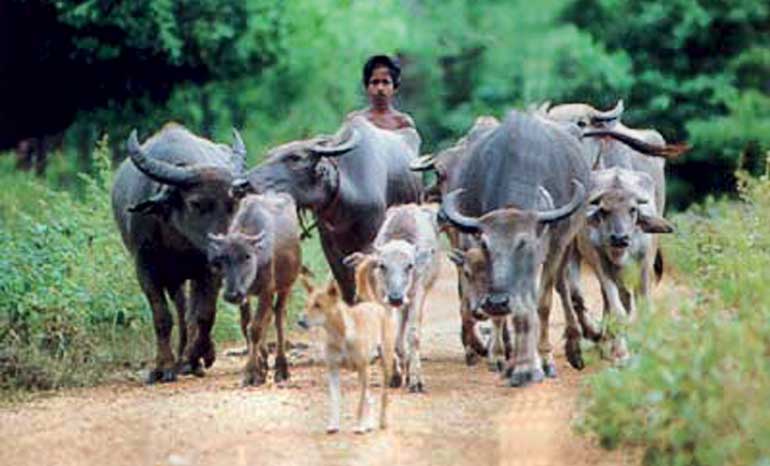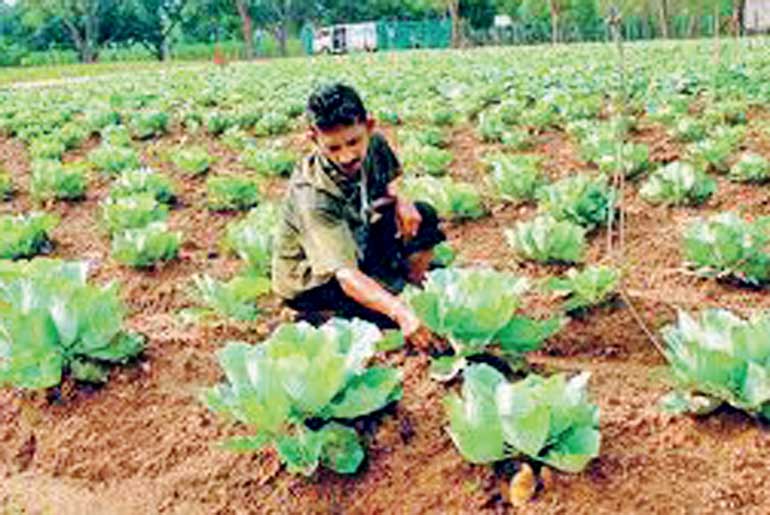Saturday Apr 26, 2025
Saturday Apr 26, 2025
Thursday, 15 February 2018 00:15 - - {{hitsCtrl.values.hits}}

(Part 1 of this article can be read here)
Strategy Options for the Sector
Driving the agenda
The starting point will be creating and nominating central organising committees based on growing areas/regions with representation from across the rice farming community of those areas/regions in the country.
The members of these committees will be tasked with educating and creating awareness among the rice farmer on why the initiative of co-operation and asserting ownership makes sense. This will include:
Creating support

Use of funds
Distribution and marketing
Transportation strategy
In the vegetable sector, it is a well-known fact that due to crude packaging and transport strategies large quantities of vegetables perish. In 2013, the previous government tried to bring in a policy of packing in baskets when transporting as opposed to gunny bags with disastrous results.
The failure of the initiative was solely due to the inability of authorities to understand the principle of the rights of the people and absence of choice. What the then Trade Ministry people should have done was to give a choice and leave the transporter to decide based on mutual benefits.
With the farmer community being in charge of the whole sector as opposed to middlemen and to increase the yield in the utilisation of vegetables, it is proposed that a twofold approach be adopted. Namely,
1. The current practice of using gunny bags for transporting vegetables
2.Use of baskets to transport vegetables
3.Those transporters who select the option of baskets to be provided with baskets at a concessional price, facilities to transport the empty boxes back to base by rail at a very nominal rate, reduction in the annual revenue license fee and concessions in import duty when importing new trucks
4.Those who opt to use the old gunny bag model of transportation will not receive duty concessions for new truck imports
Revenue management in rice
The fundamental in revenue management of perishable assets is the revenue opportunity cost of the next unit of inventory or EMR (Expected Marginal Revenue). EMR is the probability of selling the next unit of inventory. If the probability is low, then the end consumer price too will be low. In the rice market, with bumper harvests there will inevitably be pressure on the end consumer price of rice. While the consumer is benefited, the drawback will be the downward pressure on the price of paddy at the farm gate which will eventually result in cutback in the farming acreage in the next season.
Unlike in the case of fixed inventory capacity such as airlines, hotels, cruise liners, where the inventory subordinate table is built taking into account the market segmentation for optimisation of revenue (unless utilised at the time of departure or on the day of occupation the inventory will perish) the same cannot be applied in the case of commodities such as rice or vegetables where the marginal unit could determine the price if overproduced.
Therefore, strategic plans need to be in place to ensure there is optimal production with the farmer obtaining a better price, without exploiting the consumer. Some of the strategies could be,
Developing an optimal income management process
This will likely be a combination of guaranteed prices for products supplied plus distribution of dividends at agreed intervals throughout the year. Within the structure, the new organisations may decide to set aside funds annually to establish and create an effective pension fund/EPF for the members.
Over time, the financial strength of the organisation should be such that it will be in position to provide financing to the members on preferential terms to that of banks and current financial businesses.
Further, after a tax holiday period, the organisations could be taxed on their profits generating income to the Government.
Developing an Information & Communication Technology Strategy – ICT
There is need for the organisations to develop rice and other allied products commerce data. The new organisations may wish to consider making use of already existing resources within the community or develop their own resource centres for upkeep of all data.
Innovation, research and development
The new organisations will adopt a gradual and systematic process of implementing research and acquiring new knowledge to upgrade the rice crop in respect of quality, varieties, and volumes. This will include;
There are a number of other areas where the new organisations can play an important role. This could include provision of farming experts to help increase production in underperforming regions and ensuring effective water management.
The activities of the new organisations could well develop to buying beyond the production of its members. Further the organisations will need to have the infrastructure in place to deal with disputes, issues, and problems within the farming community and its members.
Further, after an initial gestation period, the organisations could be quoted in the stock exchange with members being allowed to sell a certain percentage of their shares in the exchange.
Let the whole nation open its eyes and see the plight of farmers. Like the birds being freed from a net, let us free the farmers from the net of poverty, unhappiness, and debt, so that they reach the destination of peace and happiness; because their happiness will be the nation’s happiness.
Food security
All agricultural strategies in all sectors will have little impact if focus is not directed to food security. In the developed world, food security is part of the national agenda. Japan is a good example where due to influence of the rice farmer, rice imports are banned except in processed forms. Rice production is also subsidised by the government which aggravated trade friction between Japan and USA. The Japanese position is that self-sufficiency in rice production is important for food security.
The EU is another good example of how food security is seen by the community. In fact, all developed nations have food security at the highest importance in national development. By building the economic strength of the farming community, Sri Lanka can create food security and ensure that the fleecing of the consumer by the middlemen will not take place.
The meeting chaired by the Minister for Food Security on 16 January was one good example. Viewers heard firsthand how officials in various sectors under the ministry spoke of the misdeeds of the past and how B-onions, in millions of kilos, perished in the warehouses.
Corrupt officials and the middlemen will never allow the Government to implement food security under the present structure. Indeed, on the following day, the minister informed the IGP to seal a warehouse of CWE in Colombo pending investigations.
By empowering the farmers in all sectors of agriculture, the Government will be easily able to implement the food security plans. A satisfied society of farmers who are the primary producers and that of the end consumers will mean great harmony and peace to all. That peace will lead to ultimate prosperity for all in our motherland.
Indeed, in the Paththakamma Sutra, the Enlightened One extolled the lay people to do the five giving or Pancha Bali. One of which is Athithi Bali or doing service to others and caring for those who seek help/service (It may be noted that long before the marketers coined the phrase ‘Customer Relationship Management (CRM)’, Lord Buddha had spoken of the virtue of service).
(The writer can be reached at [email protected] or [email protected])
Discover Kapruka, the leading online shopping platform in Sri Lanka, where you can conveniently send Gifts and Flowers to your loved ones for any event including Valentine ’s Day. Explore a wide range of popular Shopping Categories on Kapruka, including Toys, Groceries, Electronics, Birthday Cakes, Fruits, Chocolates, Flower Bouquets, Clothing, Watches, Lingerie, Gift Sets and Jewellery. Also if you’re interested in selling with Kapruka, Partner Central by Kapruka is the best solution to start with. Moreover, through Kapruka Global Shop, you can also enjoy the convenience of purchasing products from renowned platforms like Amazon and eBay and have them delivered to Sri Lanka.
Discover Kapruka, the leading online shopping platform in Sri Lanka, where you can conveniently send Gifts and Flowers to your loved ones for any event including Valentine ’s Day. Explore a wide range of popular Shopping Categories on Kapruka, including Toys, Groceries, Electronics, Birthday Cakes, Fruits, Chocolates, Flower Bouquets, Clothing, Watches, Lingerie, Gift Sets and Jewellery. Also if you’re interested in selling with Kapruka, Partner Central by Kapruka is the best solution to start with. Moreover, through Kapruka Global Shop, you can also enjoy the convenience of purchasing products from renowned platforms like Amazon and eBay and have them delivered to Sri Lanka.